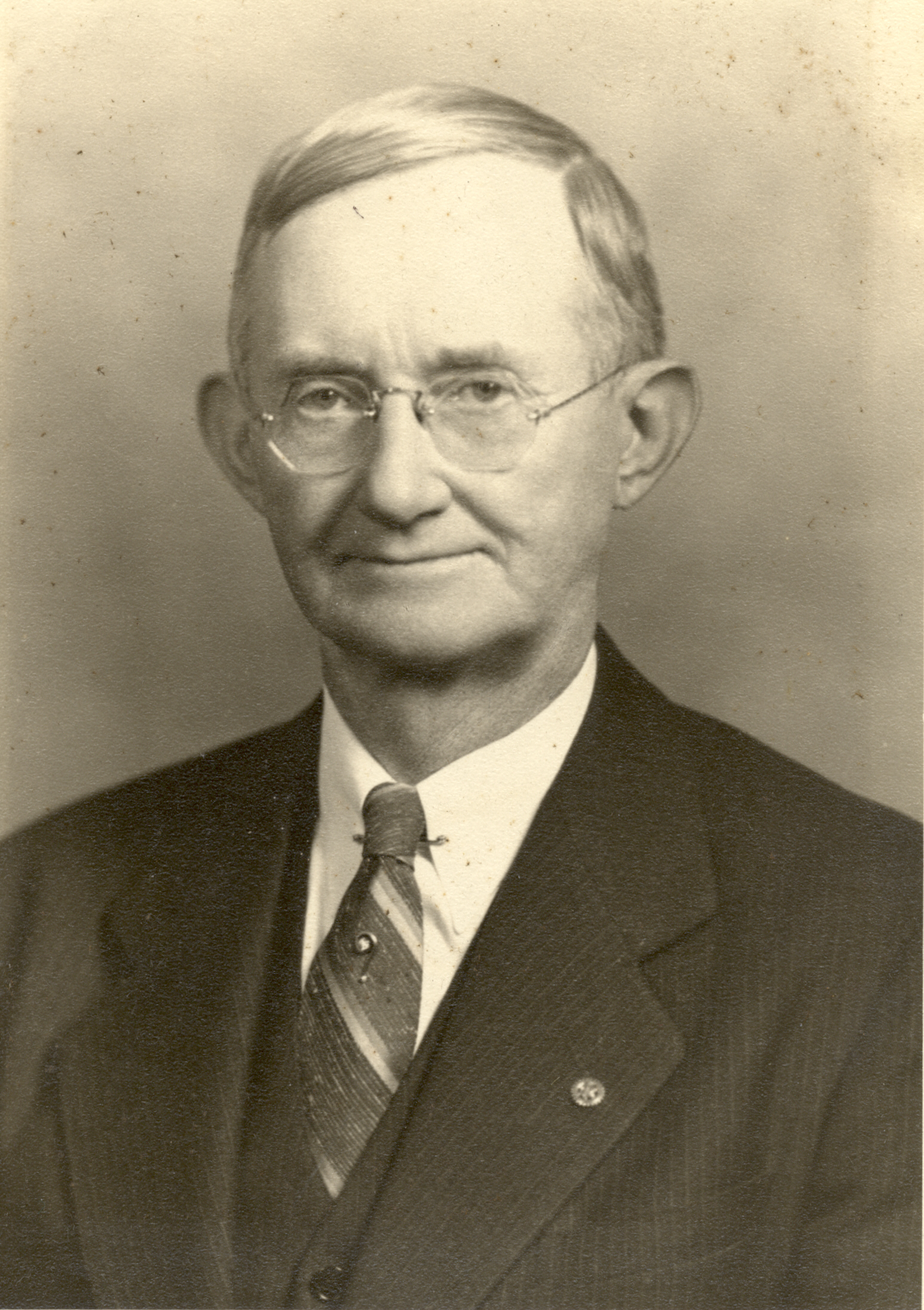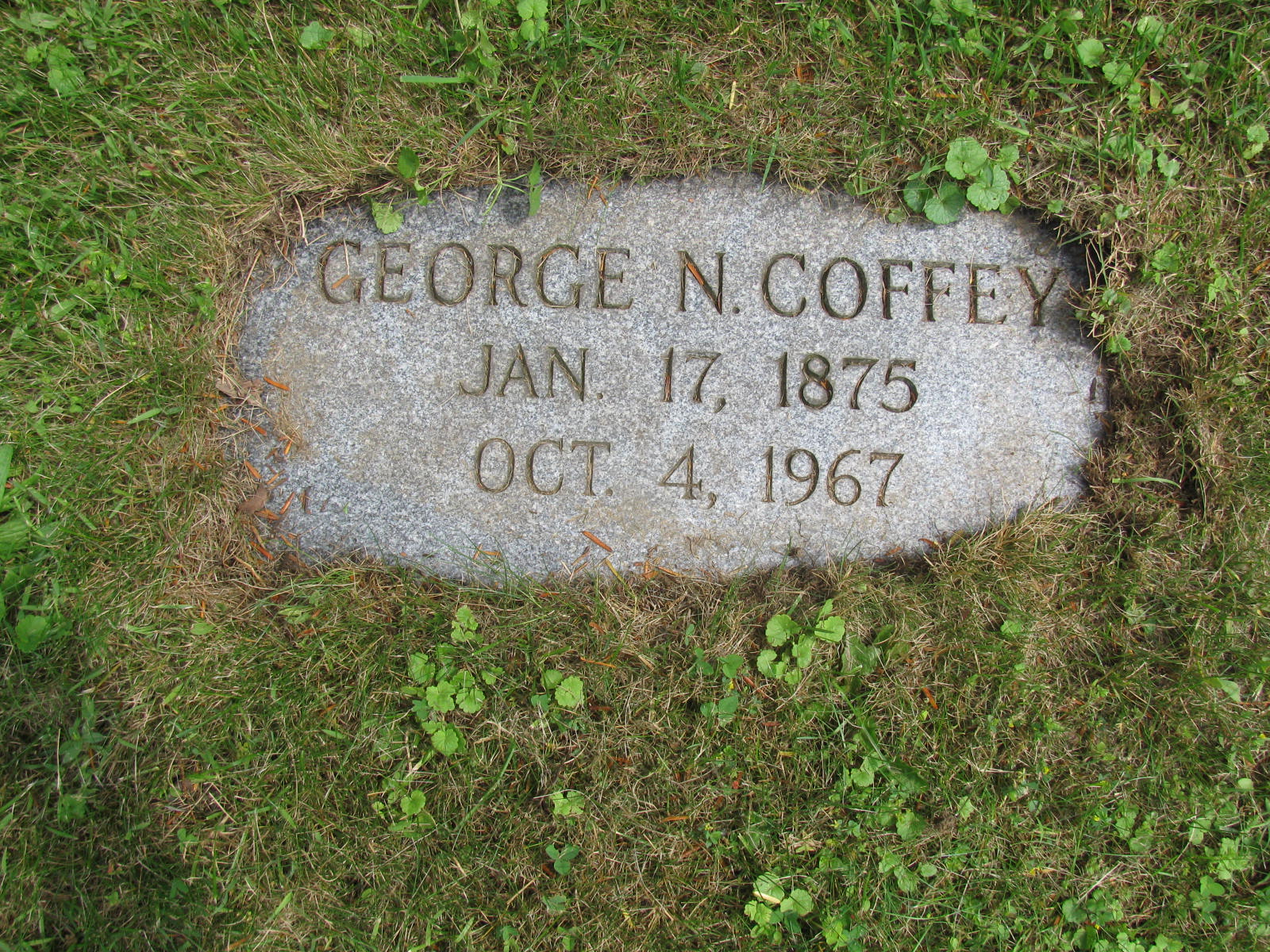George's distinguished career as a pioneer in the field of soil science (or pedology) in the United States is summarized in the following abstract for a 1999 biographical article:
George Nelson Coffey joined the Bureau of Soils in 1900, the second year of its existence, and worked in the program for about 11 years. During those years he worked on soil surveys in many parts of the United States. Those surveys exposed him to a wide variety of soils. Because of his experience and knowledge, he was chosen to supervise soil classification and correlation after five years with the Bureau. During the time that he was in charge of soil classification and correlation, Coffey became acquainted with earlier soil studies, such as those of E.W. Hilgard in Mississippi, T.C. Chamberlain in Wisconsin, and the Dokuchaiev school in Russia. From those sources and his own field experience, Coffey developed and promoted his ideas of soil genesis and classification. Coffey's ideas were in marked contrast to the prevailing idea in this country that soils were simply a function of the underlying rocks. Coffey presented his ideas in journal articles for several years, culminating with the publication of USDA Bureau of Soils Bulletin No. 85 in 1912. Bulletin 85 is now recognized as a classic, but like Coffey's journal articles, it fell on deaf ears in 1912. Coffey left the soil survey program before Bulletin 85 was published and worked at the Ohio Agricultural Station, where he worked on soil mapping, an erosion study, and fertilizer trials. Later, Coffey moved on to the University of Illinois. In 1922 Coffey left soil science as a career but retained his interest in soils and geology. After he left the soil survey program Coffey's publications on soil genesis and classification were largely forgotten. About a decade later a profound change in the concept of soil and in the understanding of soil genesis began in the United States....A new group of American pedologists...rediscovered Bureau of Soils Bulletin No. 85 and earlier publications by Coffey and recognized the advanced nature of Coffey's ideas of soil genesis and classification. Those ideas mark Coffey as one of the first, if not the very first, of the American pedologists.
[Eric G. Brevik, "George Nelson Coffey, Early American Pedologist," (Abstract of article) Soil Science Society of America Journal 63 (1999).]
__________________________
Obituary
George N. Coffey, Attorney And Geologist Dies At 92.
Dr. George N. Coffey, 92, Wayne Attorney, geologist, and for many years owner of a local abstract company, died Tuesday night at Glendora Nursing Home where he had lived for several years.
He was born in Lenoir, North Carolina, Jan. 17, 1875, and since 1911 has been an Ohio resident, coming to Wooster a year later to work with the Agricultural Station (now Ohio Research and Development Center) here in charge of a soil survey crew. During that year Mr. Coffey directed studies which involved visits to every county in the state.
Perhaps his best known contribution to soil science was his thesis for his Ph.D., "A Study of the Soils of the United States," a work later published by the United States Department of Agriculture.
George Coffey worked his way through the University of North Carolina by firing furnaces, doing janitorial work and as an assistant in the geology laboratories. His graduate work was done at George Washington University where he earned his master's degree in 1907 and his doctor's degree four years later.
The prominent Wooster man was elected president of the American Society of Agronomy in 1909, heading an organization which produced a uniform classification of soils in both the United States and Canada during his term of office.
In 1914 he married a Wooster woman, Clara Kean, daughter of a local judge. Author of countless publications, Dr. Coffey moved to Illinois where he was named state leader of the County Farm Advisor's Group in 1915, the predecessor of today's Agricultural Extension services.
Mr. and Mrs. Coffey moved back to Wooster in 1921 and a year later he entered the abstract title business, establishing the Wayne County Abstract Co. which had offices over the Commercial Banking and Trust Co. on W. Liberty St. for many years. When Mr. Coffey's health began to fail in 1954 he sold the firm to a Cleveland firm, one later purchased by Richard Keating who worked with Mr. Coffey.
George Coffey, through the LaSalle Extension University in Chicago, received his law degree in 1932.
In 1936 he traveled extensively throughout Europe and in 1955 he made an extended trip to the Holy Land and surrounding countries.
He was an active member of the Wooster Methodist Church, was secretary of the Wooster Board of Trade and a former president of Wooster Rotary Club.
His wife died in 1926. Survivors include a son, William, of Schenectady, N.Y., three grandchildren and a sister, Mary Coffey, of Enid, Okla.
Two brothers and a sister died previously.
The Coffey home was at 352 N. Bever St. and following the death of his wife, Mr. Coffey and his sister-in-law, Miss Frances Kean, lived there. In recent years both have been residents at Glendora.
Services are pending until the arrival of relatives.
McIntyre Funeral Home is in charge of arrangements.
[Wooster Daily Record (Wooster, OH), 4 October 1967, 2.]
George's distinguished career as a pioneer in the field of soil science (or pedology) in the United States is summarized in the following abstract for a 1999 biographical article:
George Nelson Coffey joined the Bureau of Soils in 1900, the second year of its existence, and worked in the program for about 11 years. During those years he worked on soil surveys in many parts of the United States. Those surveys exposed him to a wide variety of soils. Because of his experience and knowledge, he was chosen to supervise soil classification and correlation after five years with the Bureau. During the time that he was in charge of soil classification and correlation, Coffey became acquainted with earlier soil studies, such as those of E.W. Hilgard in Mississippi, T.C. Chamberlain in Wisconsin, and the Dokuchaiev school in Russia. From those sources and his own field experience, Coffey developed and promoted his ideas of soil genesis and classification. Coffey's ideas were in marked contrast to the prevailing idea in this country that soils were simply a function of the underlying rocks. Coffey presented his ideas in journal articles for several years, culminating with the publication of USDA Bureau of Soils Bulletin No. 85 in 1912. Bulletin 85 is now recognized as a classic, but like Coffey's journal articles, it fell on deaf ears in 1912. Coffey left the soil survey program before Bulletin 85 was published and worked at the Ohio Agricultural Station, where he worked on soil mapping, an erosion study, and fertilizer trials. Later, Coffey moved on to the University of Illinois. In 1922 Coffey left soil science as a career but retained his interest in soils and geology. After he left the soil survey program Coffey's publications on soil genesis and classification were largely forgotten. About a decade later a profound change in the concept of soil and in the understanding of soil genesis began in the United States....A new group of American pedologists...rediscovered Bureau of Soils Bulletin No. 85 and earlier publications by Coffey and recognized the advanced nature of Coffey's ideas of soil genesis and classification. Those ideas mark Coffey as one of the first, if not the very first, of the American pedologists.
[Eric G. Brevik, "George Nelson Coffey, Early American Pedologist," (Abstract of article) Soil Science Society of America Journal 63 (1999).]
__________________________
Obituary
George N. Coffey, Attorney And Geologist Dies At 92.
Dr. George N. Coffey, 92, Wayne Attorney, geologist, and for many years owner of a local abstract company, died Tuesday night at Glendora Nursing Home where he had lived for several years.
He was born in Lenoir, North Carolina, Jan. 17, 1875, and since 1911 has been an Ohio resident, coming to Wooster a year later to work with the Agricultural Station (now Ohio Research and Development Center) here in charge of a soil survey crew. During that year Mr. Coffey directed studies which involved visits to every county in the state.
Perhaps his best known contribution to soil science was his thesis for his Ph.D., "A Study of the Soils of the United States," a work later published by the United States Department of Agriculture.
George Coffey worked his way through the University of North Carolina by firing furnaces, doing janitorial work and as an assistant in the geology laboratories. His graduate work was done at George Washington University where he earned his master's degree in 1907 and his doctor's degree four years later.
The prominent Wooster man was elected president of the American Society of Agronomy in 1909, heading an organization which produced a uniform classification of soils in both the United States and Canada during his term of office.
In 1914 he married a Wooster woman, Clara Kean, daughter of a local judge. Author of countless publications, Dr. Coffey moved to Illinois where he was named state leader of the County Farm Advisor's Group in 1915, the predecessor of today's Agricultural Extension services.
Mr. and Mrs. Coffey moved back to Wooster in 1921 and a year later he entered the abstract title business, establishing the Wayne County Abstract Co. which had offices over the Commercial Banking and Trust Co. on W. Liberty St. for many years. When Mr. Coffey's health began to fail in 1954 he sold the firm to a Cleveland firm, one later purchased by Richard Keating who worked with Mr. Coffey.
George Coffey, through the LaSalle Extension University in Chicago, received his law degree in 1932.
In 1936 he traveled extensively throughout Europe and in 1955 he made an extended trip to the Holy Land and surrounding countries.
He was an active member of the Wooster Methodist Church, was secretary of the Wooster Board of Trade and a former president of Wooster Rotary Club.
His wife died in 1926. Survivors include a son, William, of Schenectady, N.Y., three grandchildren and a sister, Mary Coffey, of Enid, Okla.
Two brothers and a sister died previously.
The Coffey home was at 352 N. Bever St. and following the death of his wife, Mr. Coffey and his sister-in-law, Miss Frances Kean, lived there. In recent years both have been residents at Glendora.
Services are pending until the arrival of relatives.
McIntyre Funeral Home is in charge of arrangements.
[Wooster Daily Record (Wooster, OH), 4 October 1967, 2.]
Family Members
Sponsored by Ancestry
Advertisement
Advertisement
















